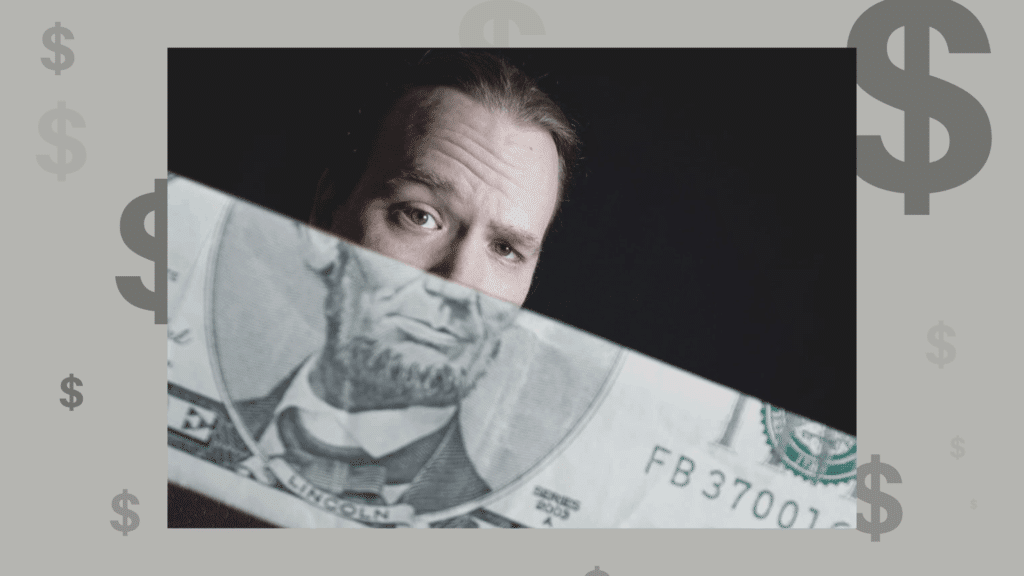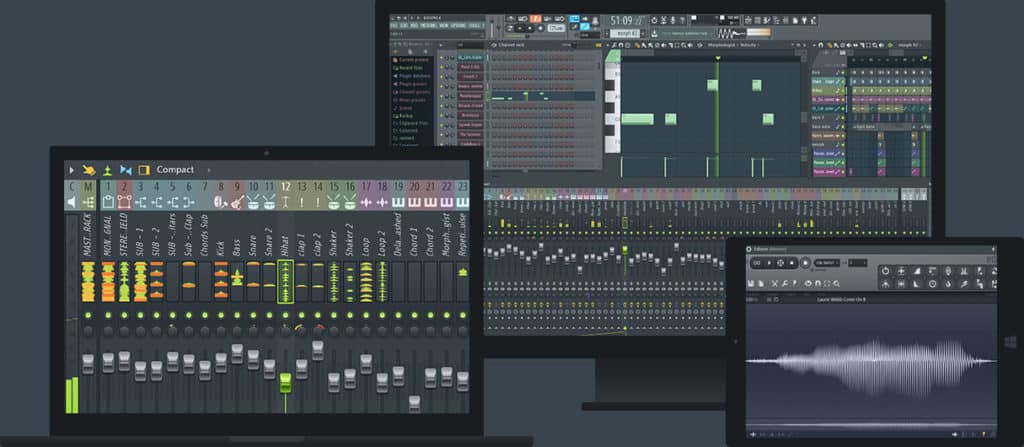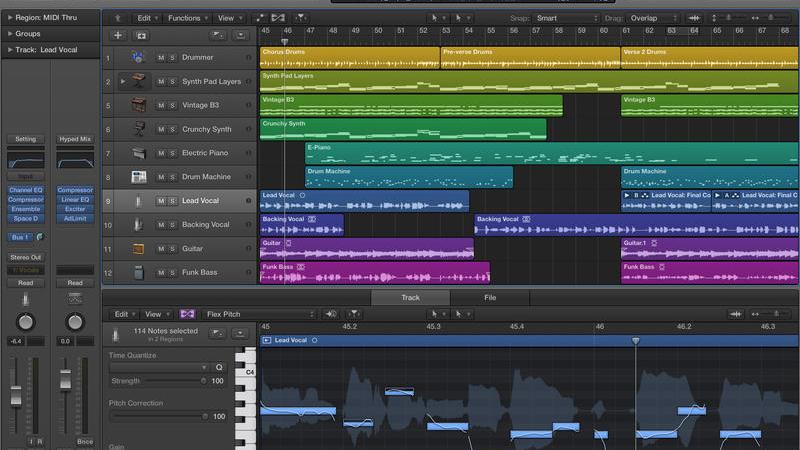Music production doesn’t have to be an expensive hobby. In fact, you can get started today without dropping thousands of dollars on gear.
If you’re looking for music production gear on a budget, you’ve come to the right place.
Here’s what we cover:
- Where to start? The two pieces of ESSENTIAL gear
- Plan and Budget
- Choosing a DAW
- The best premium plugins on a budget
- The best free plugins
- The best headphones on a budget
- The best studio monitors on a budget
- The best keyboards & midi controllers on a budget
- The best microphones on a budget
- The two best audio interfaces I recommend
- How to learn affordably: educational resources
- 5 bonus tips for learning production on a budget
Let’s dive in.
Get the headstart you need in music production with our EDM Starter Kit 🎛️
Get our collection of high-quality presets, samples and PDF guides – suitable for all genres of electronic music 👇
The two essential pieces of gear
Other than a laptop or desktop computer, there are only two things you need to make electronic music:
- A DAW (Digital Audio Workstation)
- A pair of headphones
That’s it. Software, and headphones.
Higher quality headphones will help, but even cheap earbuds will be enough to get you started (we’ll go over this later in the article). Also, if you already own monitors/speakers, you can use those as well.
Now, a DAW and headphones are the bare minimum needed to produce electronic music. I call this the “Minimum Viable Studio” setup. It’s enough to learn the basics of production and begin writing your own original music.
However, there is plenty of other gear and software that will help you to produce. These aren’t essential, but if you’re willing to invest money, they can seriously help your production career. I call these non-essential, because they’ll make producing easier, but you can get by without them.
Non-essential gear includes:
- High-Quality Headphones
- Studio Monitors
- Midi Controllers – Keyboards, Drum Pads, etc..
- Music Productions Books/Courses
- Audio Interface
- Microphone
- Software/Plugins
- Outboard Gear – Synthesizers, Studio Gear
Plan and Budget
Maybe you’ve been producing music for a while, but want to branch out and get some more gear.
Or maybe, you’re completely new to this and want to keep under a certain budget.
Plan it out: Which gear do you want and need?
Before you spend any money, you should make a plan.
- How serious are you about production?
- Are there any “non-essential” items (as listed above) that would help?
The first question is important because it makes you assess your goals and aspirations in electronic music. If you’re just getting into it for fun, it doesn’t make sense to empty your bank account for a new pair of studio monitors. But if you’re committed to turning music into a career, you should seriously consider investing in equipment to help jump start your music journey.
As for the second question, every producer will have different priorities as far as equipment goes.
- If you’re a vocalist, you’ll want an audio interface and a microphone.
- If you play guitar you’ll likely want an audio interface to record your guitar.
- If you’re a piano player, a good keyboard (or MIDI keyboard) is a great investment.
You get the point.
Budget: How much do you want to spend?
Identify what gear you ‘think’ you’ll need to start off with. You’ll be doing the same thing at the end of the post when we’ve covered everything else.
Once you’ve planned what gear you’d like, it’s time to make a budget. Make a list of all the gear you’re considering, and create a fixed budget you’re willing to invest. Prioritize each item, and decide how to best spend your money.
Now, let’s look at some gear.
Choosing a DAW
For more information on choosing a DAW, read our comprehensive article on The Best DAW for Beginners
A DAW (Digital Audio Workstation) is the most important and fundamental thing to own when it comes to music production. It’s where you create your music!
If you already own and are using a DAW, feel free to skip this section.
If not, here’s a breakdown of the most popular DAWs.
Reaper ($60)
If you’re looking for versatility and stability at a low cost – Reaper is for you. The best thing about Reaper is that it has an “evaluation version” which is a complete and fully-featured version of the software.
This means you can try it out and use it indefinitely before buying.
If you can’t justify the cost of other popular DAWs, this is the best option.
The downside is that it’s less popular than mainstream DAWs like Ableton Live, FL Studio, and Logic Pro. As such, there are less educational resources available for it. But it’s still a solid DAW, especially if you’re willing to put the time in to learn how it functions.
You can take a closer look at Reaper here.
FL Studio 12 Producer Edition ($199)
FL Studio is one of the most popular DAWs, and for good reason—it’s easy to pick up and learn.
It does cost more than Reaper, but it’s got less of a learning curve and there are more resources out there for users.
FL Studio comes in 4 editions. If you’re on a budget, recommend the Producer Edition, which offers you all the essentials necessary to produce.
FL Studio also has a demo which you can use for as long as you’d like. The demo has one major limitation which is that you can’t open saved projects. Still, it’s great to learn with!
Take a closer look at FL Studio here.
Logic Pro X ($199)
Logic Pro X is quickly becoming one of the most popular DAWs among electronic music producers.
It’s fairly affordable, has a beautiful interface, and tons of functionality.
Unfortunately, it’s only for Mac users. So if you’re using Windows, you’ll have to find another option.
– – –
I’ve only listed Reaper, FL Studio, and Logic Pro X due to their competitive pricing. There are other DAWs out there (Ableton Live, Cubase, Studio One, Bitwig, Reason), but they’re a lot more expensive.
It’s worth noting that most companies offer educational discounts on their DAW software, so if you’re a student, be sure to take advantage of these discounts.
What do the Pro’s Use?
The most popular DAWs are Ableton Live, FL Studio, and Logic Pro.
You can’t go wrong with any of these.
What Do I Use?
I started in FL Studio, but later on moved to Ableton Live. FL Studio is great, and I’m more then happy to recommend it, but I feel the workflow and design of Ableton is considerably better. The full version (suite) is quite expensive, but their standard edition is currently $449 and is plenty powerful. If you’re a student, the discount brings it down to $269, which is much more reasonable. Connor (EDMProd’s Product Manager) uses Ableton as well, and uses Logic Pro X for recording.
Beware of “Light” and “Intro” Versions
Be wary of “light” versions of popular softwares. Many companies sell cheaper versions of their software that are very limited, even though the top tier software is extremely powerful. This includes Ableton Live Intro, FL Studio Fruity Edition, and more. I swear by Ableton Live Suite, but would advise against the Intro edition.
Note: Don’t be drawn in by ‘cheap’ DAWs, such as the ones advertised to ‘help you create beats within minutes.’ These are a waste of money and will not help you become better at music production. Dubturbo, Beatmaker, and a few more might ring a bell.
The best premium plugins on a budget
FL Studio and Logic Pro X have an extensive range of plugins from the get-go, so you don’t need to spend much money or time accumulating more (especially if you’re a new producer). If you decide to get Reaper, you may want to look into getting some extra plugins on the side.
Most modern DAWs have plenty of great effects plugins, so if you’re planning on investing in plugins, I’d recommend purchasing a synthesizer first. That’s the way our EDM Foundations course is set up: all you need is a DAW (Ableton) and a synthesizer (Serum). Most stock DAW synthesizers are a bit limited for modern EDM, so it’s a good idea to invest in a proper synthesizer.
Here are my recommendations for low-cost synthesizers:
Sonic Academy ANA 2
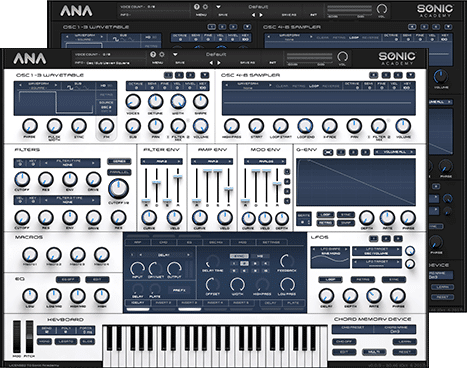
ANA is an excellent subtractive synthesizer from the team at Sonic Academy. It’s intuitive, friendly, and capable, making it easy for you to create professional, modern sounds. It’s popular in part because of it’s friendly price tag, but it’s more than capable of competing with more expensive synthesizers.
KV331 Synthmaster 2
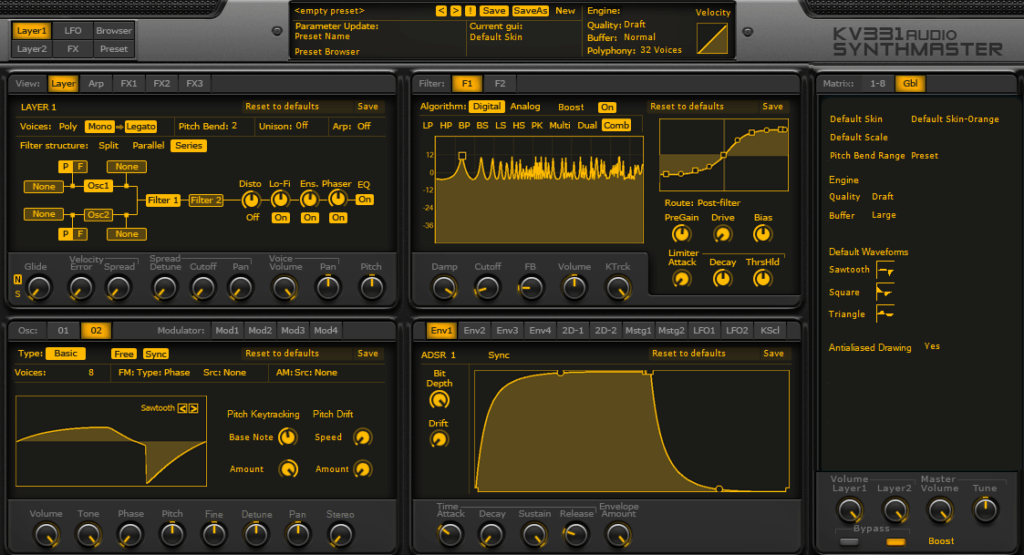
Synthmaster 2 is one of the most highly awarded synths, and a great value at under $100. It’s incredibly capable, offering over ten different types of synthesis and a massively powerful modulation system.
They frequently discount the plugin, so keep an eye out for sales.
Xfer Records Serum
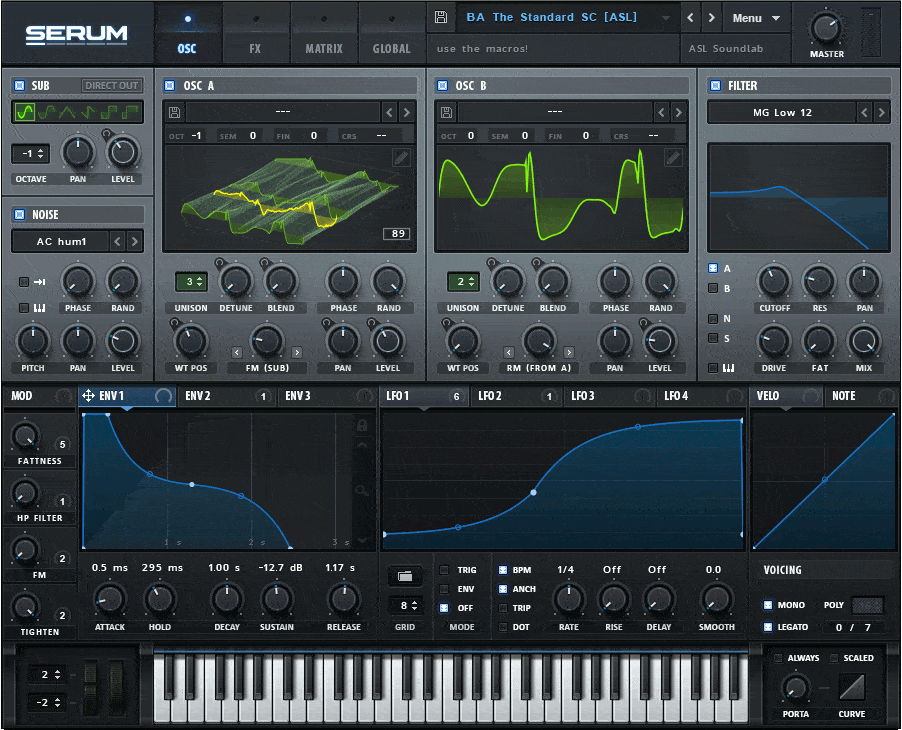
Although the full price of Serum is a bit pricey, they allow you to pay it off in installments, at $9.99 a month. Serum is overwhelming popular, and the favorite synth of the EDMProd team. If you’re on a budget but serious about production, I’d highly recommend renting-to-own Serum.
There are two main ways to purchase Serum:
- Through the Xfer Records website
- Through Splice on a rent-to-own plan (sponsored)
Unless you have a strong desire to pay for Serum all at once ($189 payment), I recommend using the Splice rent-to-own plan. You don’t pay any extra, and payments end when you’ve paid for the synth.
Lennar Digital Sylenth1
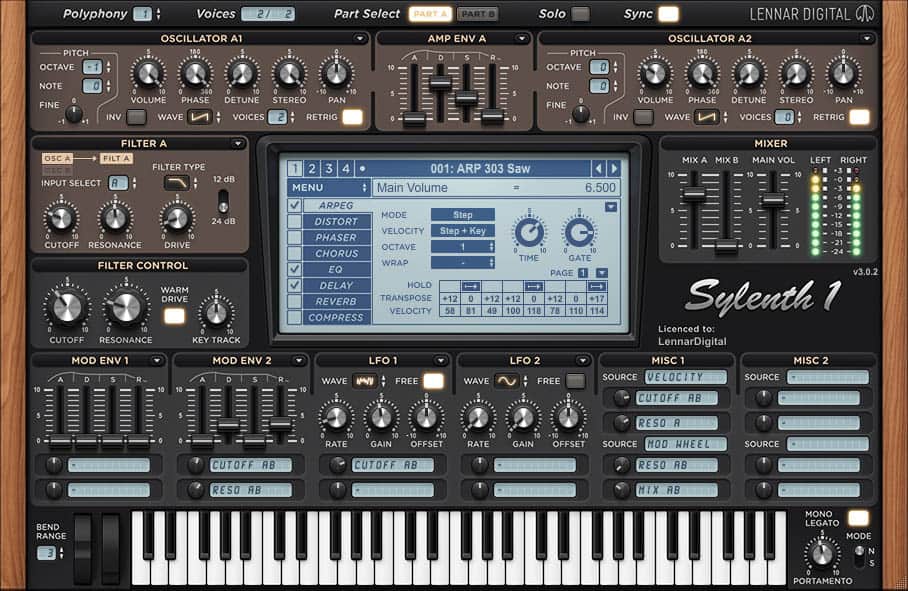
Similar to Serum, the makers of Sylenth1 offer a rent to own program for 10 euros a month. Sylenth1 is one of the most popular synths in electronic music, and has been so for the past decade.
The best free plugins
If you’re looking for free plugins, there are a ton on the market, including some that rival (or beat) their paid competitors
Here are my recommendations for freeware plugins:
Voxengo Plugins
Voxengo currently offers 14 free plugins, covering saturation, delay, spectrum analyzing, and more. They’re fully capable free plugins and a common favorite among bedroom producers..
Check out Voxengo’s free plugins here.
The Togu Audio Line Range
Togu Audio Line, more commonly known as TAL, have a wide range of free plugins that are great for entry level and experienced producers alike.
I highly recommend picking up some of these if you’re after third-party plugins, namely:
- TAL-Noisemaker
- TAL-Filter-II
- TAL-Bitcrusher
Check out their free range of products here.
Computer Music Plugins
Computer Music is one of the most popular production magazines. With the purchase of one issue, you gain access to their entire free plugin vault, which features 65+ instruments and effects plugins from well-respected plugin developers.
Splice’s Top Free Plugins
Splice lists their platforms most popular free plugins, so rather than take my word for it, you can see what free plugins producers are actually using in their projects. Many of them you can download the plugins directly from the website, so long as you have a (free) splice account.
Even More Free Plugins
You don’t really need a huge amount of plugins to get started with, especially considering that your DAW will already contain many. If you’re looking for more free plugins, then I recommend checking out the following articles:
If you’re looking for more free plugins, check out our article: Free VST Plugins – The 51 Best Synths and Effects for EDM Production
Get the headstart you need in music production with our EDM Starter Kit 🎛️
Get our collection of high-quality presets, samples and PDF guides – suitable for all genres of electronic music 👇
The best music production headphones on a budget
It’s important to be able to accurately hear what you’re creating in the DAW.
For this reason, I recommend buying a good pair of headphones before you get studio monitors. If you can afford both, go for both.
While none of these headphones are “cheap”, spending any less won’t get you much further than a pair of Apple earbuds. Proper monitoring is the second most important purchase you’ll make (after your DAW), so it’s worth investing wisely in a proper pair of headphone.
Sennheiser HD 280 – $99

These headphones are incredibly comfortable, reliable, and also fairly accurate. For their price, I’d rate them unbeatable.
In short, these headphones are a lot better than you’re typical consumer headphones such as Skullcandy or what have you. I highly recommend them, and at a price of $99 you can’t really go wrong.
Sony MDR7506 – $99

Though not as great as the Sennheiser HD280’s, these headphones still provide a high quality sound at a reasonably low price. They have a great frequency response, and are rather comfortable unlike other headphones in the same price range.
You can purchase the Sony MDR7506’s for $70-80 from Amazon.
Audio-Technica ATH-M50x – $149

These are a little more on the expensive side, but well worth it.
I’ve been using these headphones for the past few years and I have to say that the quality is outstanding. For some people they can be a little uncomfortable, but I find they’re fine as long as breaks are taken every now and then.
If you can stretch a couple more dollars, then I’d highly recommend these headphones regardless of where you are in your production journey!
Take a look at the ATH-M50x’s on Amazon.
AKG K 240 – $69

These are also killer. The K 240 have a wide dynamic range and very high sound quality.
The bass response in these headphones is incredibly smooth, along with silky mids and highs. Oh, and they’re comfortable as well! Always a bonus.
Check out the AKG K 240s on Amazon.
Beyerdynamic DT 770 PRO – $189
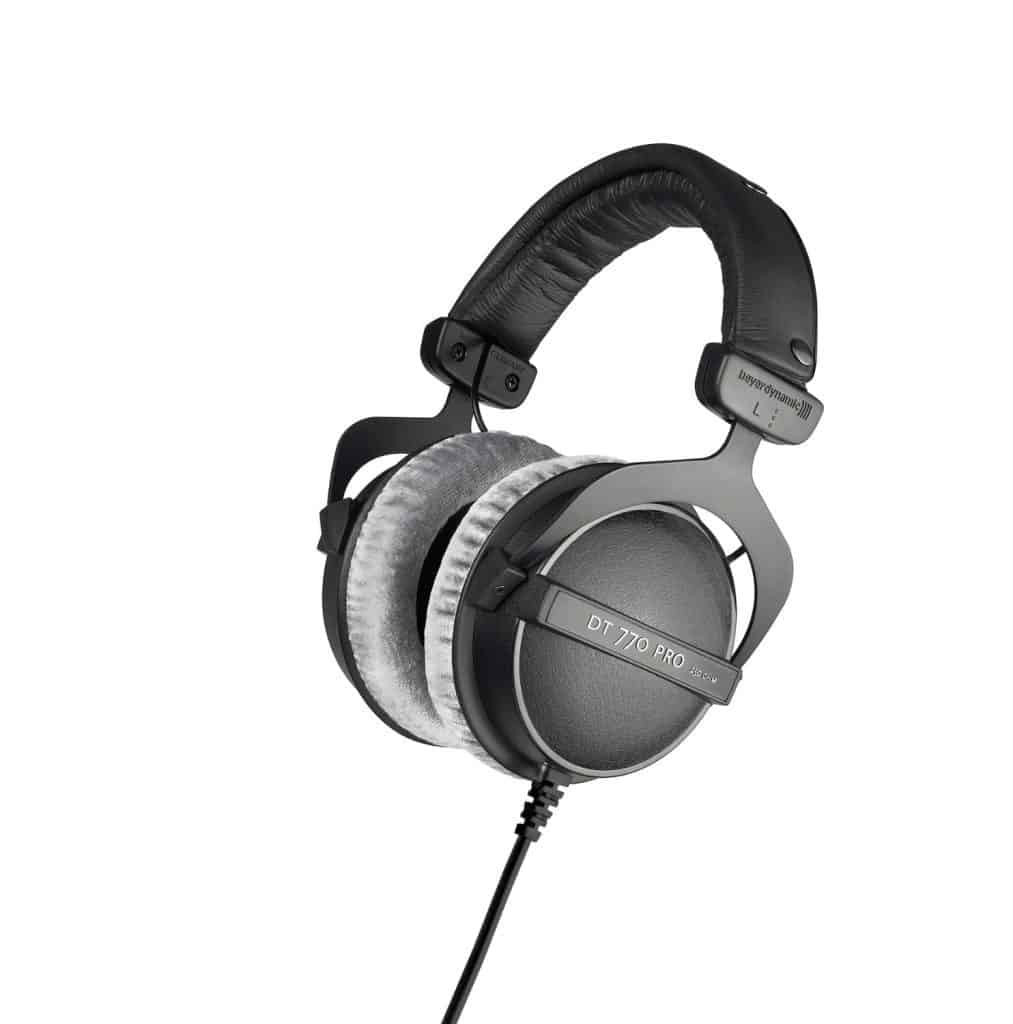
These headphones are quite a bit more expensive than the rest, but if you’re willing to shell out a few more dollars then you’ll be rewarded with great bass response, amazing build quality, and unbeatable comfort.
Take a look at the DT 770 PROs on Amazon.
The best studio monitors on a budget
I can’t stress this enough, but purchase headphones first, unless you’ve got a perfectly treated room (which I’m assuming you don’t).
If you’re looking for another point of reference and something else to listen with while producing, then monitors are the next step. They offer a better stereo field than headphones and also allow you to ‘feel’ the music a little more.
While there are lower end systems like the Mackie CR3 and M-Audio AV42, I’d recommend saving money until you can afford a system above $250.
I’ve recommended a few of the entry-level monitors below.
Note: Monitors require an external USB audio interface.
KRK Rokits – $369.99 (pair)

These are without doubt the most popular monitors on the market.
Rokits are far better than your standard hi-fi speaker system, so you’d do good to get a pair.
You can choose between 5, 6, and 8″ cones. I’d avoid the 5’s (as they don’t reproduce low frequencies very well) and opt for the 6’s, unless you have a large room.
Behringer Truth B1031A – $149.99 (ea)

I personally use a pair of B2031A’s, so I can vouch for Behringer having a good sound (build quality not so much, but you’ll probably upgrade regardless of which monitors you buy).
The speaker cone is a lot smaller, so if you’re producing bass heavy music then these may not be for you. (NOTE: There’s a model with 8″ drivers, it’s just a little more expensive)
Take a look at the B1031A’s here (single speaker).
Yamaha HS5 – $399.99 (pair)
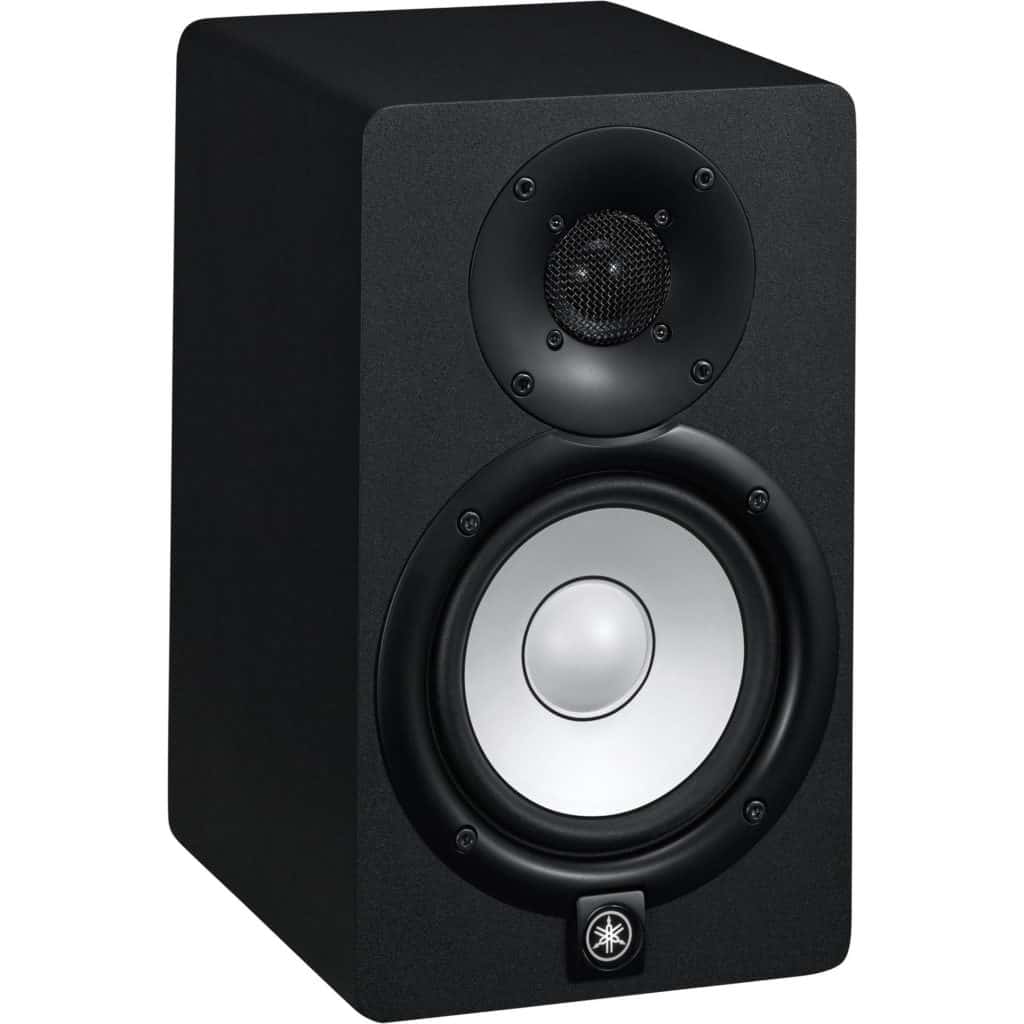
If you like producing on external speakers, and are looking to invest in a quality pair that will last, the Yamaha HS5’s are a great choice. For the size/price, you can’t go wrong. Their larger sizes the HS7s & HS8s, can be found in professional studios worldwide.
The Best MIDI Keyboards & Controllers on a Budget
There are two main types of MIDI devices: MIDI Keyboards and MIDI Controllers.
MIDI keyboards are, well… keyboards. But they don’t produce a sound themselves (unlike an actual keyboard). You need to connect them to your DAW and operate a plugin or virtual instrument.
Performance controllers include controllers such as the launchpad, Ableton Push, and MPC line. Some producers love having these in their workflow, as they can play in drum and synth lines, rather than draw them in. Again, these aren’t necessary, but they’re a great way to get more creative in the studio.
Akai Pro LPK25 – $59
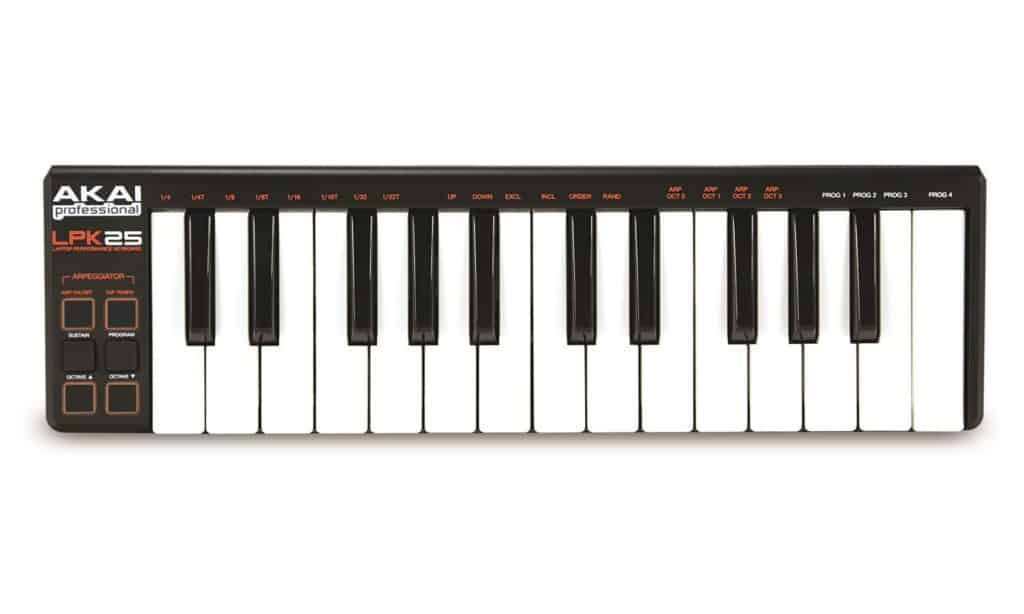
If you want a mini MIDI keyboard with minimal features, the Akai LPK25 is a great place to start. It’s extremely portable, and connects to your DAW with minimal setup. If you’re new to piano and don’t want to spend too much, this is a great choice
Akai Pro MPK Mini MK3 25-Key – $119

If you want a few more features, then the MPK Mini MK3 might be what you’re looking for.
While still keeping the price low, Akai have managed to fit in 8 velocity-sensitive drum pads along with parameter control (via knobs) to this small but sexy device.
If I was to buy a new MIDI keyboard today, I’d get this one, hands down.
Akai Pro MPK Mini 25-Key on Amazon.
M-Audio Keystation 49 Keyboard Controller ($49/$99/$160)

While mini-keyboards are great, they aren’t as “playable” as full size keyboards. If you’ve got some experience playing piano, or are looking to start, you may want to consider purchasing a MIDI keyboard with full size keys.
The M-Audio Keystation line is a great budget-friendly keyboard with full-size keys. At $99 you get what you pay for, but if you’re newer to the piano this a great piece of equipment to get started. 49 keys is enough to play with both hands, and they also offer larger (61-key & 88-key) and smaller (32-key) models.
Check out the 49-key model here.
Novation MK3 LaunchPad Mini – $119

If you’re interested in the performance aspect of music production, look no further than the Novation Launchpad Mini. By now, you’ve likely seen the live performances from artists such as Madeon and Shawn Wasabi, and this controller is a great entry into that scene. In my opinion, controllers like these are more “fun” than “practical” for production, but always a blast to play around with.
Akai Professional MPD218 – $99

Lastly, we have the Akai Professional MPD218. This is an entry level drum pad controller from one of the most well respected companies in the industry. If you’re looking for something to play drums in on without the bells and whistles, this is a great choice.
The Best Microphones on a Budget
Maybe you’re a vocalist yourself, or you know of one, or maybe you just want to record yourself speaking philosophical quotes in a breakdown of one of your own tracks. Whatever the reason, a microphone always helps when trying to get some sort of audio into your DAW.
There’re a few different types of microphones, and each microphone will be better at recording different things – some will excel at recording guitars, others will excel at recording vocals, and so forth. When deciding which microphone to purchase, keep in mind what you’re planning on recording. Here’s a great guide from Sweetwater breaking down the different types of studio microphones.
Keep in mind that you’ll likely want an audio interface, microphone cable, and mic stand in addition to the microphones. If you’re not comfortable investing in a microphone, recording into your phone can get the job done for simple vocal snippets.
Finally, here are some microphones I recommend:
Shure SM57 – $99
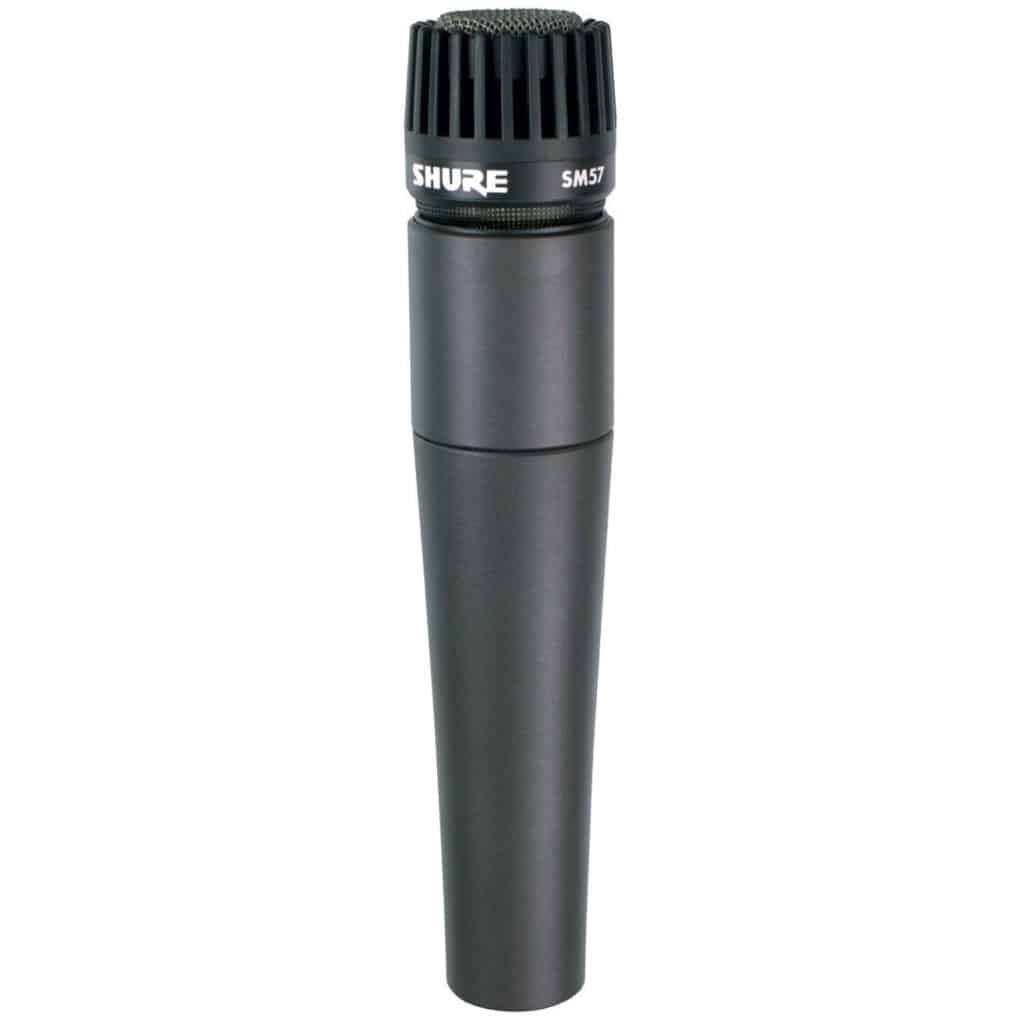
Unbeaten in it’s price range, this Shure microphone is recognized by professionals worldwide as one of the best live dynamic mics out there. It is great for recording nearly any instrument – especially drums and guitar amps.
If you’re looking for a multi-purpose mic on a budget, this will exceed your expectations.
Audio-Technica AT2020 – $99

If you’d prefer a condenser mic compared to a dynamic mic such as the SM57 above, then this Audio-Technica microphone may appeal.
It’s probably one of the lowest condenser microphones you can get before starting to venture into the cheap and nasty wholesale range. This is an ideal starter mic especially if you haven’t had experience with condenser microphones before.
Note that you’ll need an audio interface for this microphone (but there is a USB version)
Learn more about the Audio-Technica AT2020 here.
MXL 770 Cardioid Condenser Microphone – $79

At this price range, it’s hard to beat the MXL 770. It’s similar to the AT2020, as it’s a great all around microphone. It comes with a hard case and a shock mount, which helps reduce rumble while recording.. Altogether, I’d highly recommend this microphone
The two best audio interfaces
For more info on audio interfaces, check out our article: The 27 Best Audio Interfaces Money Can Buy
If you want to connect a guitar, microphone, or speakers to your computer, you’ll need an audio interface. Thankfully, there are plenty of quality budget-friendly audio interfaces. The main things you’ll need to consider are how many inputs and output you’ll need. Inputs include microphone preamps (for condensers) and line inputs (i.e. guitars, dynamic microphones). For outputs, consider how to connect the audio interface to your speakers, and what cables will be needed.
Here are a few I recommend:
Focusrite Scarlett Solo – $119

Across the board, all of the Focusrite interfaces are sturdy and dependable. If you’re looking for an audio interface that let’s you do basic recording and connect to external monitors, this is a great choice. If you need more functionality, such as additional mic preamps, the rest of their line is reasonably priced as well.
M-Track 2X2 C-Series – $195

I recently purchased this as a temporary interface while my new one shipped, and was quite surprised by it’s functionality. I love the one-knob volume control, and ended up integrating it into my production workflow. If all you want is to connect to your monitors, this interface is a great choice.
The best educational material on a budget
You can certainly educate yourself for free, I know I certainly did in the early days – but there are some great resources out there (books and the likes) that do cost a little.
EDM Foundations
EDM Foundations is our comprehensive course for new producers.
You’ll follow along step-by-step with our detailed walkthroughs and learn everything from composition and sound design to mixing and mastering (+ everything else in-between).
Over 4,000 producers have enrolled. Want to join them? Click here to learn more.
Books
Some of the books that have helped me immensely:
- Dance Music Manual: Tools, Toys, and Techniques
- Mixing Secrets for the Small Studio
- The Mixing Engineer’s Handbook
There are many others out there, but these will help you progress incredibly quick.
Computer Music Magazine
I’m still subscribed to Computer Music Magazine today. Every month an issue is sent out, jam-packed full of valuable tips and also free samples and plugins!
What more could you want?
You can find Computer Music mags at your local music store, or otherwise online.
Coursera
Coursera.org sometimes has courses on music related topics such as music theory, mixing, electronic music production – you name it.
These courses are always free and are run by professionals (so you don’t have to worry about misinformation). Unfortunately, some of the courses are only run at certain times, so if you miss out… you miss out.
Bonus Tips
Watch out for Sales
Nearly every music production software company regularly runs sales. Most will do Black Friday, with other sales scattered throughout the year. Check music forums to see how often certain software companies run sales, and make sure to sign up for the plugin developers’ mailing lists.
Educational Discounts
I’ve mentioned this above, but keep an eye out for companies that offer educational discounts. Even if you aren’t currently enrolled in schools, many online courses, such as the Hyperbits Masterclass, will allow you to apply for educational discounts.
Look for Bundles
Software bundles are a great way to get a collection of plugins at a fraction of the cost. Great bundles include Native Instruments Komplete 11, Soundtoys 5, Waves Gold Bundle, and the Fabfilter Essentials Bundle.
Find Used Gear
If you’re looking to pick up a more expensive pair of monitors or a nice MIDI keyboard, used gear is a great way to to. Personally, I’d stay away from used microphones, but monitors, keyboard, and drum pads can all be found for cheap used. For example, you can pick up Ableton Push 1 (retail $799) for around $250 nearly anywhere.
Free Samples
Once your studio is together, you’ll need good samples to make music with. Check out our ultimate list of sample packs and resources.
A Final Word
As you can see, electronic music production doesn’t need to break the bank. In fact, you can get started on almost nothing.
Work out what you need to get, purchase it, and get to work!
This article will probably be updated every couple of months to include new products and tips, but let us know if you’ve got anything you want to add.
Get the headstart you need in music production with our EDM Starter Kit 🎛️
Get our collection of high-quality presets, samples and PDF guides – suitable for all genres of electronic music 👇
New Producer?
EDM Foundations is the course for you.
It’s simple, to-the-point, and action-oriented. You won’t spend hours trawling through dry theory videos, you’ll be learning as you go.
By the end of the course, you’ll have finished 4 songs, including one original that you can share with family, friends, and the world.

